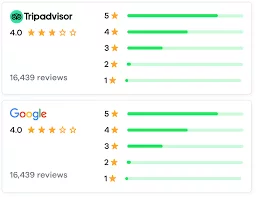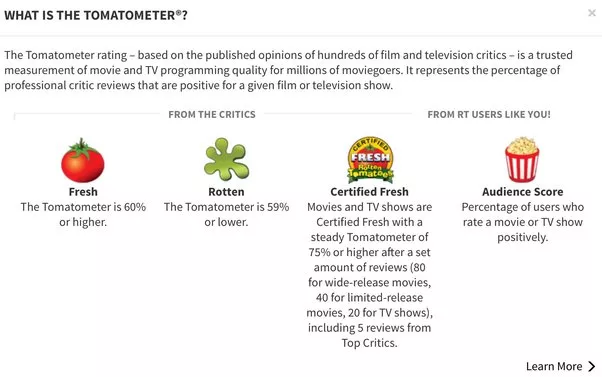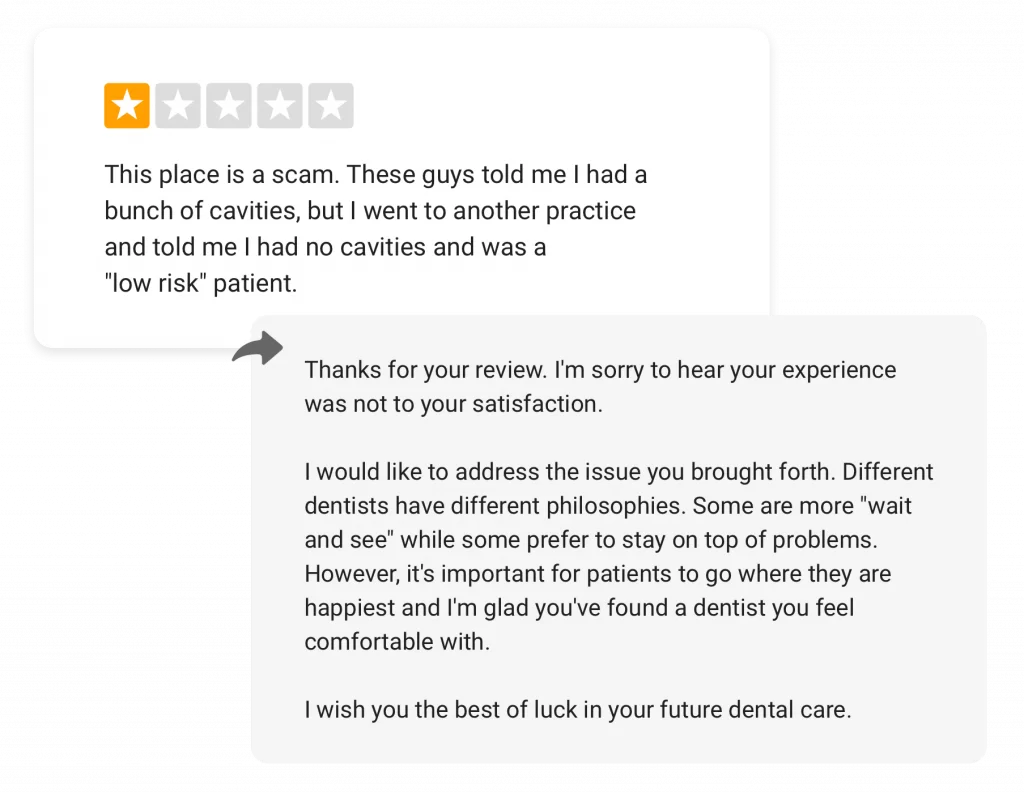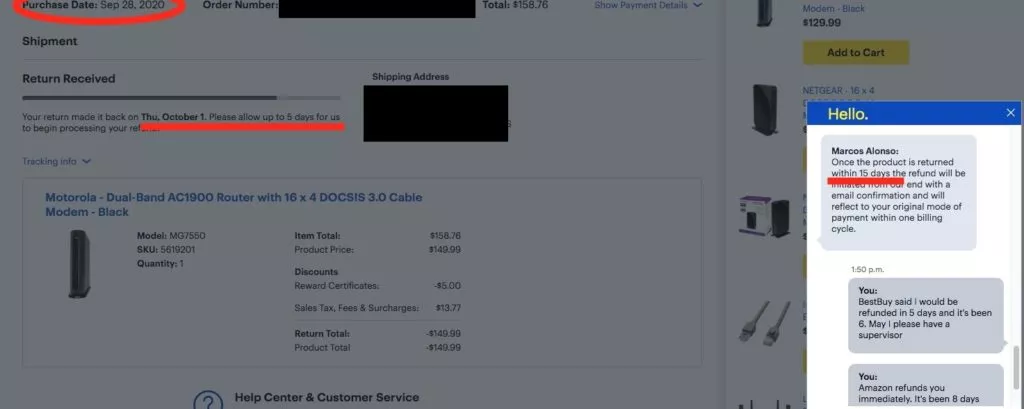In our contemporary digital landscape, the power of online reviews cannot be overstated. They serve as a critical compass for consumers navigating the vast sea of products, services, and websites available on the internet. Positive reviews can bolster your website’s credibility and act as magnets, drawing in potential customers. However, it’s essential to recognize that bad reviews, often overlooked, play an equally significant role in shaping your online reputation.

The Power of Positive Reviews
Positive reviews are akin to the wind beneath your website’s wings. They act as social proof, assuring potential visitors that others have had satisfactory experiences. Positive reviews can:
- Boost Credibility: A website adorned with positive reviews carries an aura of trustworthiness. Users are more likely to engage with your content or make a purchase if they see that others have had positive interactions.
- Attract Customers: Positive reviews can serve as a beacon, attracting potential customers who are on the lookout for reputable websites that align with their needs and interests.
- Improve Search Rankings: Search engines often favor websites with a substantial number of positive reviews, potentially pushing your website higher up in search results and increasing visibility.
Power of Bad Reviews:
1.1 Trust-Building Through Transparency

Transparency is a fundamental pillar of trust in any relationship, and this principle extends to the connection between your website and its visitors. When your website openly displays bad reviews, it conveys a powerful message to your audience. It signifies that you are unafraid of criticism and committed to resolving issues to enhance the user experience.
In today’s digital landscape, consumers are discerning and well-informed. They comprehend that perfection is an elusive ideal, and they prize authenticity. By acknowledging the presence of bad reviews, you underscore your website’s commitment to honesty over a facade of flawlessness. This, in turn, cultivates trust among your audience, as they can rely on your website to provide an honest representation of your products, services, or content.
Furthermore, transparency communicates your confidence in the quality of your offerings. It signifies your belief that the positive attributes of your website outweigh the negative ones and underscores your trust in your audience’s ability to appreciate your sincerity. This level of openness can differentiate your website from competitors who might choose to conceal or delete bad reviews, which can raise doubts about their authenticity.
1.2 Real-Life Example: Amazon

Amazon, the colossal e-commerce giant, serves as an exemplary model of transparency in online reviews. When you navigate to a product page on Amazon, you’ll encounter a blend of positive and negative reviews for most products. Amazon doesn’t shy away from showcasing negative feedback; instead, it prominently places it alongside positive reviews.
This commitment to transparency bolsters trust among buyers. When consumers encounter a product with solely positive reviews, skepticism may creep in, and they may question the authenticity of those reviews. Conversely, when they encounter a product with a spectrum of opinions, including negative ones, they feel more secure in the knowledge that they are making an informed decision.
2.1 Identifying Areas for Improvement:
Bad reviews should not be viewed as mere criticism but as constructive feedback from your audience. They are a direct reflection of customer experiences, and they can provide you with vital information on what’s not working well. Here are several ways in which bad reviews can help you identify areas for improvement:
- Pinpointing Specific Issues: Bad reviews often contain specific details about what went wrong. Whether it’s a technical glitch, a confusing user interface, slow loading times, or a flawed product feature, these details can be invaluable in troubleshooting and resolving problems.
- Understanding User Pain Points: Negative feedback sheds light on the pain points and frustrations your users encounter. By addressing these pain points, you can enhance the overall user experience and reduce customer dissatisfaction.
- Discovering Trends: When multiple bad reviews mention the same issues, it indicates a recurring problem that needs attention. Identifying these trends allows you to prioritize improvements that will have the most significant impact on user satisfaction.
- Uncovering Blind Spots: Sometimes, your team might not be aware of certain issues until they are brought up in bad reviews. These reviews serve as a reality check, helping you uncover blind spots and gaps in your website’s functionality or content.
2.2 Real-Life Example: Yelp

Yelp, a popular review platform for businesses, exemplifies how negative reviews can be harnessed to identify shortcomings and drive improvements. Yelp is not just a platform for customers to leave feedback; it’s a tool for businesses to listen and learn from their customers. Here’s how Yelp businesses use negative reviews to enhance customer experiences:
- Addressing Specific Complaints: When a business receives a negative review on Yelp, they have the opportunity to respond to the reviewer and address their specific concerns. This public interaction shows other potential customers that the business takes feedback seriously and is committed to making improvements.
- Implementing Changes: Many businesses on Yelp take the feedback they receive to heart. They use negative reviews as a roadmap for making necessary changes. For example, a restaurant might improve its service quality or menu based on customer comments in bad reviews.
- Monitoring Trends: Yelp provides businesses with analytics and insights that allow them to track trends in customer feedback. If multiple reviews mention similar issues, it’s a clear indicator that those areas require attention.
- Showcasing Improvement: When businesses make positive changes based on feedback, they often highlight these improvements in their responses to bad reviews. This not only appeases the complaining customer but also demonstrates to others that the business cares about delivering a better experience.
Section 3: Responding to Negative Reviews
Responding to negative reviews is a powerful strategy that can turn potentially damaging situations into opportunities for growth and improvement. In this section, we’ll delve into the significance of engaging with dissatisfied customers through responding to bad reviews, with a real-life example from Airbnb illustrating the impact of this approach.

3.1 Responding to Negative Reviews:
Negative reviews can be a source of anxiety for website owners and businesses. However, instead of avoiding or dismissing them, embracing bad reviews and responding to them can be one of the most effective ways to mitigate their impact and even turn things around. Here’s why responding to negative reviews is so important:
- Demonstrates Accountability: When you respond to a negative review, you show that you take responsibility for the customer’s experience. This accountability is a key factor in rebuilding trust.
- Shows Empathy: Responding to a bad review with empathy and understanding can go a long way in addressing the customer’s concerns. It shows that you care about their feelings and value their feedback.
- Provides an Opportunity to Correct Mistakes: Responding to negative reviews gives you a chance to acknowledge any mistakes or shortcomings and offer solutions. This proactive approach can potentially resolve the customer’s issue and improve their perception of your website or business.
- Displays a Commitment to Improvement: When you respond to negative reviews by stating your intention to address the issue and make improvements, it demonstrates a commitment to continually enhancing your offerings.
3.2 Real-Life Example: Airbnb

Airbnb, a leading online marketplace for lodging and travel experiences, excels at encouraging hosts to respond to bad reviews. This approach not only benefits individual hosts but also enhances Airbnb’s reputation as a platform dedicated to guest satisfaction. Here’s how Airbnb leverages the power of responding to negative reviews:
- Public Engagement: Airbnb allows hosts to respond to reviews publicly, ensuring that potential guests can see how hosts handle criticism. This transparency fosters trust in the platform.
- Acknowledging Concerns: When hosts receive negative reviews, they have the opportunity to acknowledge the guest’s concerns and express understanding. This empathetic response shows that the host values the guest’s feedback.
- Offering Solutions: Airbnb hosts often offer practical solutions or explanations for any issues mentioned in the review. By doing so, they aim to resolve the guest’s concerns and improve their experience.
- Demonstrating Commitment: Airbnb encourages hosts to demonstrate their commitment to guest satisfaction and the platform’s values. Hosts can use their responses to highlight the steps they are taking to address any issues mentioned in the review.
Section 4: Boosting SEO and Visibility
In today’s digital landscape, where online presence is everything, search engine optimization (SEO) is paramount for your website’s visibility. In this section, we’ll explore how the presence of diverse review content, including bad reviews, can surprisingly boost your website’s SEO and overall visibility. We’ll illustrate this concept with a real-life example from TripAdvisor.
4.1 Diverse Review Content:

When we think about SEO, we often focus on keywords, meta tags, and backlinks, but there’s more to it than meets the eye. Search engines like Google and Bing are constantly refining their algorithms to provide users with the most relevant and authentic results. In this context, the diversity of content on your website, including user-generated content like reviews, plays a significant role.
Here’s how diverse review content, encompassing both positive and negative feedback, can positively impact your website’s SEO:
- Increased Content Volume: By actively encouraging and showcasing a wide range of reviews, you’re generating more content on your website. This, in turn, increases the overall volume of text on your pages, providing search engines with more content to index and potentially rank.
- Long-Tail Keywords: User reviews often contain long-tail keywords and phrases that reflect the language customers use when searching for products or services. These user-generated keywords can expand your website’s keyword reach, making it more likely to appear in search results.
- Authenticity and Trust: Search engines aim to deliver results that users trust. Websites with only positive reviews may appear biased or unauthentic. The inclusion of negative reviews can actually enhance your website’s trustworthiness by presenting a more balanced perspective.
- Engagement and Time on Site: User-generated reviews can boost engagement on your website. When users spend more time reading and interacting with reviews, it signals to search engines that your site offers valuable content, potentially improving your ranking.
4.2 Real-Life Example: TripAdvisor

TripAdvisor, a renowned travel review website, serves as an excellent real-life example of how diverse review content can significantly boost SEO and visibility. TripAdvisor stands out in the travel industry for its commitment to providing travelers with a balanced and authentic representation of hotels, restaurants, and attractions. Here’s how TripAdvisor leverages diverse review content:

- Inclusive Review Platform: TripAdvisor actively encourages users to leave reviews, both positive and negative, about their travel experiences. As a result, it boasts a vast and diverse collection of user-generated content.
- Balanced Representation: The presence of negative reviews on TripAdvisor alongside positive ones provides travelers with a more realistic view of the destinations they are researching. This balance fosters trust among users.
- SEO Benefits: TripAdvisor’s approach to including diverse review content enhances its search engine ranking. Users searching for travel-related information often find TripAdvisor at the top of their search results due to its wealth of diverse and valuable content.
- User Engagement: The extensive collection of reviews on TripAdvisor keeps users engaged on the platform, reading and interacting with reviews, and exploring various travel options. This high user engagement contributes to TripAdvisor’s strong SEO performance.
Section 5: Encouraging Authenticity

In the age of information and skepticism, authenticity is a prized virtue for websites seeking to establish trust with their audience. In this section, we’ll explore the growing skepticism towards perfection and how embracing bad reviews can counter this doubt while demonstrating transparency. We’ll illustrate this with a real-life example from Rotten Tomatoes.
5.1 Skepticism Towards Perfection:
Today’s consumers are savvier than ever before. They understand that no business or product is flawless, and they approach online reviews and recommendations with a healthy dose of skepticism. When a website or platform showcases only positive reviews, it can raise red flags for users. Here’s why skepticism towards perfection is prevalent and why embracing bad reviews is crucial:
- Authenticity Concerns: Consumers are increasingly concerned about the authenticity of online content. When they see only glowing recommendations and no negative feedback, they may question whether the reviews are genuine or manipulated.
- Realism Matters: People appreciate realism and honesty. They want to see a balanced representation of a product, service, or website, including both the pros and cons. This balanced view helps them make informed decisions.
- Understanding the Full Picture: A one-sided perspective can leave users feeling like they’re not getting the full picture. They want to know what potential pitfalls or drawbacks to expect, as this information is crucial in their decision-making process.
- Transparency Builds Trust: Demonstrating transparency by showcasing bad reviews sends a clear message that your website values honesty over a facade of perfection. This, in turn, fosters trust with your audience.
5.2 Real-Life Example: Rotten Tomatoes

Rotten Tomatoes, a popular movie review aggregator, stands out as a prime example of embracing bad reviews to maintain authenticity and provide users with a more balanced perspective. Here’s how Rotten Tomatoes achieves this:
- Inclusion of Negative Reviews: Rotten Tomatoes not only features positive movie reviews but also includes negative ones. They aggregate and display reviews from critics and audiences alike, showcasing both favorable and critical opinions.
- Balanced Representation: By including negative movie reviews, Rotten Tomatoes offers moviegoers a more balanced and realistic view of a film’s reception. Users can see a range of opinions and decide for themselves whether a movie aligns with their preferences.
- Empowering Decision-Making: Rotten Tomatoes’ approach empowers users to make informed choices. They can gauge the overall sentiment around a movie, understand potential shortcomings, and decide whether it’s worth their time and money.
- Enhanced Trust: Rotten Tomatoes’ commitment to displaying a spectrum of reviews enhances trust among its users. They know they can rely on the platform to provide a comprehensive and honest assessment of movies.
Section 6: Converting Skeptics into Customers

Convincing skeptical visitors to become loyal customers is a challenging but achievable goal for websites. In this section, we’ll explore the power of addressing concerns raised in bad reviews as a strategy to win over skeptics. We’ll illustrate this concept with a real-life example from Best Buy, a major electronics retailer.
6.1 Addressing Concerns:
Skeptical visitors, often influenced by negative reviews or doubts, are a potential untapped audience for your website. Instead of viewing skepticism as a roadblock, consider it an opportunity to showcase your dedication to customer satisfaction. Addressing concerns raised in bad reviews is a powerful way to convert skeptics into loyal customers. Here’s why it works:
- Demonstrates Responsiveness: When you actively engage with negative reviews and offer solutions, you show that you are responsive to customer feedback. This responsiveness can instill confidence in skeptics that their concerns will be heard and addressed.
- Transparency and Accountability: Addressing concerns publicly demonstrates transparency and accountability. It shows that you are not hiding from criticism but rather tackling it head-on. This level of transparency can foster trust.
- Problem Resolution: By providing solutions to the issues raised in bad reviews, you can resolve the problems that may have deterred potential customers in the first place. This proactive approach can lead to improved customer experiences.
- Turning Negatives into Positives: Successfully addressing concerns allows you to turn a negative situation into a positive one. When skeptics see that you are committed to making things right, they may become some of your most loyal customers.
6.2 Real-Life Example: Best Buy

Best Buy, a major electronics retailer, stands as an exemplary case of a company that actively addresses bad reviews with solutions. Here’s how Best Buy utilizes this strategy to turn skeptics into loyal customers:

- Customer Service Team: Best Buy has a dedicated customer service team that monitors and responds to customer reviews, both positive and negative. This team takes the time to understand and address the concerns raised by customers.
- Proactive Approach: Best Buy’s approach is proactive. They don’t wait for dissatisfied customers to reach out; they actively reach out to them through review responses. This demonstrates their commitment to customer satisfaction.
- Public Resolutions: When Best Buy responds to negative reviews, their responses are public for all potential customers to see. This transparency showcases their dedication to addressing issues and improving the customer experience.
- Enhanced Reputation: Over time, Best Buy’s strategy of addressing concerns in bad reviews has contributed to an enhanced reputation as a customer-centric retailer. This reputation attracts not only loyal customers but also new customers who appreciate the company’s commitment to resolving problems.
Conclusion:
Harnessing the power of bad reviews is not about avoiding criticism but rather using it as a catalyst for growth and improvement. By implementing these strategies, you can enhance your website’s overall performance and credibility.
FAQs on Bad Reviews:
Should I respond to every bad review on my website?
It’s a good practice to respond to as many bad reviews as possible. However, prioritize reviews that highlight recurring issues or those that can be resolved to improve the overall user experience.
How can I encourage users to leave reviews on my website?
You can encourage users to leave reviews by creating user-friendly review forms, offering incentives like discounts or giveaways, and actively soliciting feedback through email or pop-up prompts.
Is it okay to delete bad reviews from my website?
Deleting bad reviews should be a last resort, reserved for cases of spam or inappropriate content. It’s generally better to respond to bad reviews and address the concerns raised, showing your commitment to customer satisfaction.
How do I strike a balance between positive and negative reviews on my website?
Strive for a natural balance of reviews by actively encouraging all users to leave feedback. Avoid manipulating or filtering reviews to create an artificial balance, as this can harm your credibility.
Can bad reviews actually help improve my website’s performance?
Yes, bad reviews can serve as valuable feedback that highlights areas in need of improvement. By addressing the issues raised, you can enhance your website’s performance and overall user satisfaction.



